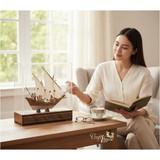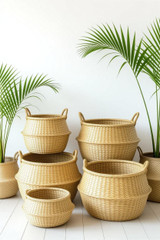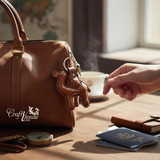Earthenware , home decor , plate , flower vase , cups & mug
Earthenware
A nonvitreous pottery that is glazed or unglazed and is fired below 1,200°C (2,190°F) is known as earthenware. Water can be absorbed by earthenware, also known as terracotta. Most modern domestic earthenware is coated with ceramic glaze, which makes it impervious to liquids.
Additionally, porcelain, bone china, and stoneware are important types of pottery, all of which are fired at high enough temperatures to vitrify. It includes "most building bricks, nearly all European pottery up to the seventeenth century, the wares of Egypt, Persia, and the near East, Greek, Roman, and Mediterranean, and some of the Chinese; and the fine earthenware which comprises the majority of our tableware today" ("today" being 1962).
During millennia, only earthenware pottery was manufactured, with stoneware gradually evolving around 5,000 years ago, but then disappearing for a few thousand years. Pit fired earthenware dates back to 29,000–25,000 BC. Porcelain was not manufactured outside East Asia until the 18th century AD, and then initially as an expensive luxury. A fired earthenware piece is opaque, non-vitreous, soft, and able to be scratched.
Production
In contemporary earthenware, kaolin is generally 25%, ball clay is 25%, quartz is 35%, and feldspar is 15%. Bisque-fired earthenware (1,830 to 2,100°F) in factories and studios is usually fired between 950 and 1,050°C (1,740 to 1,920°F) in glaze firings.
Some studio potters use a low-temperature biscuit firing followed by a high-temperature glost firing. Firing schedules are determined by raw materials and desired characteristics.
Chinese ceramics are far ahead of other cultures in this regard because they were able to achieve such high temperatures until modern times. While clay cannot be fired above 1,000 °C (1,830 °F), earthenware can be fired down to 600 °C (1,112 °F). Historically, most pottery was fired at around 800°F (1,470°C) because there was no precise means of measuring temperature and kiln conditions were very variable. Earthenware bodies have white, buff, or red colors after firing.
The firing temperature of a clay body affects the color of red earthenware. Terracotta is reddish at low temperatures, and brown or black at higher temperatures. Bloating may occur when earthenware is exposed to higher temperatures.
Type of Earthenware
Despite stoneware and porcelain becoming the most highly valued types of pottery as they were developed by specific cultures, earthenware still has many artistically significant types. Earthenware was used by the Ancient Greeks and Romans as well as Hispano-Moresque ware of the late Middle Ages, which evolved into tin-glazed ceramics or faience in many parts of Europe, including painted maiolica of the Italian Renaissance, and Dutch Delftware. Both East Asian and European porcelains could be imitated by a white glaze.
In the mid-16th century, the extremely rare Saint-Porchaire ware, apparently made for the French court, may have been the most complex earthenware ever produced. During the 18th century, particularly in English Staffordshire pottery, technical improvements enabled very fine wares, such as Wedgwood's creamware, to compete with porcelain. This can be seen in the huge creamware Frog Service for Catherine the Great. Europeans were able to afford highly decorated wares due to the invention of transfer printing processes.
In China, sancai glazed wares were lead-glazed earthenware, and terracotta remained an important material for sculpture. Etruscans carved large statues in it, while Romans used it mainly for figurines and reliefs from Campana. The painted tomb figures of the Tang dynasty in China, as well as the Yixian glazed pottery luohans that are nearly life-size, were made of earthenware. After the ceramic figurine was revived in European porcelain, earthenware figures followed, such as the popular English Staffordshire figures.
Earthenware Types :
Terracotta: a term used for a rather random group of types of objects, rather than being defined by technique .
Redware (America)
Victorian majolica
Lusterware with special iridescent glazes
Raku Ironstone china, on the border of earthenware and stoneware
Yellowware
Recent Posts
-
Order the Best Boss Day Gifts for Male & Female Bosses in the UAE from Craftihouse.com
Every year, Boss’s Day is the perfect opportunity to show appreciation for the people who lead, ment …13th Oct 2025 -
How This Gift Came to Life: The Story Behind Our Palm Leaf Baskets
How This Gift Came to Life: The Story Behind Our Palm Leaf Baskets In a world where everything is be …8th Oct 2025 -
Handmade Leather Key Chains – Timeless Souvenirs & Everyday Companions
Handmade Leather Key Chains – Timeless Souvenirs & Everyday Companions Introduction In a world where …25th Sep 2025



